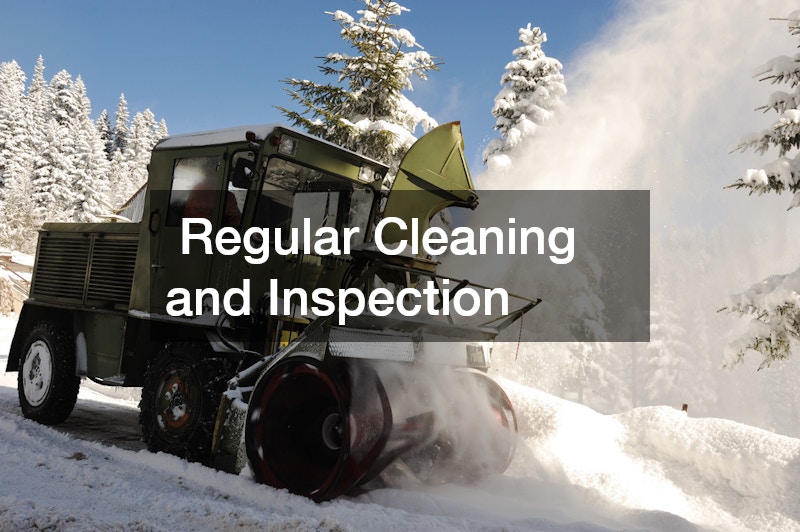
Choosing the Right Snow Plow Blades for Your Vehicle and Needs
Selecting the appropriate snow plow blade is essential for ensuring efficient and effective snow removal. The choice of blade impacts not only the ease of removing snow but also the safety and functionality of the vehicle. Considerations include vehicle compatibility, the materials from which the blade is made, and individual plowing needs.
Steel Blades
Steel blades offer unmatched durability and strength, making them ideal for heavy-duty plowing operations. These blades can withstand rigorous use, making them perfect for large commercial plows.
However, their weight requires a vehicle with adequate power to operate efficiently.
The robust nature of steel blades allows them to cut through dense snow and ice, providing a clean, smooth plow. Their ability to handle extreme conditions provides reliability in the harshest winter weather. Despite their strengths, the heavy weight could pose challenges for smaller vehicles.
Because of their construction, steel blades are susceptible to rust if not properly maintained. Regular inspection and maintenance are required to keep them in optimal condition. Investing in coatings or other protective measures can significantly extend their lifespan.
Polyethylene Blades
Polyethylene blades are lightweight and offer a non-corrosive alternative to traditional materials like steel. This quality makes them particularly suitable for use with lighter vehicles such as trucks and SUVs. They are also easier to maneuver, offering flexibility in ranges not possible with heavier blades.
The slick surface of polyethylene helps reduce friction, allowing snow to slide off easily and minimize blockage issues. This material reduces wear and tear on the vehicle, contributing to longer longevity with less stress on the equipment. For those operating in regions where salt and chemicals are prominent, their resistance to corrosion becomes a significant advantage.
In terms of maintenance, polyethylene blades require less attention, saving time and resources. Their ability to withstand impacts without denting or bending appeals to users concerned with maintenance costs. Despite their benefits, they may not perform as well in extremely icy conditions compared to their steel counterparts.
Cost and Efficiency
The balance between financial investment and operational efficiency is a core consideration when choosing blade size. While larger blades make snow removal faster, they might come at a higher purchase and maintenance cost. This balance must be struck carefully, considering long-term use and initial output.
Analyzing operational costs includes evaluating fuel consumption, wear, and potential repairs tied to different blade sizes. Ultimately, excessive investment in a large blade could nullify any efficiency gains by inflating operational costs. Therefore, prioritizing efficient plow operations without ballooning expenses is key.
The right blade size should enhance functionality without exceeding budget constraints. Comparing models and consulting with industry professionals can help identify a cost-efficient solution. Long-term value often trumps upfront cost savings, fostering a more economic snow removal routine.
Environmental Conditions
Local weather patterns and snowfall influence the choice of blade size significantly. Areas with heavy, persistent snowfall demand larger blades to minimize plowing time and energy. Conversely, regions with lighter, sporadic snowfalls might function optimally with more moderate blade sizes.
The specifications of the blade should adapt to accommodate environmental demands, ensuring safety and efficiency. Improper alignment with these factors may lead to ineffective plowing, requiring extra time and resources. Observing and understanding seasonal variations promotes more informed decisions regarding blade selection.
Regular Cleaning and Inspection
Regular cleaning and inspection play pivotal roles in preventing rust and damage to plow blades. Debris, including salt and moisture, can expedite corrosion and reduce the blade’s operational lifespan if left untreated. Regular maintenance routines ensure that these elements do not compromise the blade’s integrity.
Regular inspections allow for the early detection and resolution of potential issues before they evolve into significant problems. Checking the blade for any signs of wear or damage ensures prompt repairs and avoids escalated costs. Cleaning routines should include removing debris and thoroughly drying the blade to thwart moisture retention.
Sharpening and Conditioning
Sharpening and conditioning are integral to maintaining the performance standards of snow plow blades. Regular sharpening of metal blades enhances their cutting efficiency, reducing operational stress and time. Conversely, conditioning can entail applying rust-proof coatings to protect the blades from adverse effects.
Ensuring sharpness improves the blade’s ability to cut through compacted snow and ice, lowering the chance of blade blunting. Often overlooked, routine sharpening can quickly rejuvenate blade effectiveness and reduce fuel consumption. Applying protective coatings safeguards against environmental assaults, enhancing durability.
Storage and Off-Season Care
Proper off-season storage significantly influences the lifecycle of snow plow blades. Storing equipment correctly prevents undue degradation during periods of inactivity. Essential to this is cleaning the blade thoroughly before storing to avoid rusting and damage.
Choosing the right snow plow blade is a complex decision that demands reflection on vehicle compatibility, environmental conditions, and intended use. Proper selection enhances vehicle functionality and ensures effective snow removal. Optimal results require a blend of appropriate type, size, and consistent maintenance practices.












Post Comment